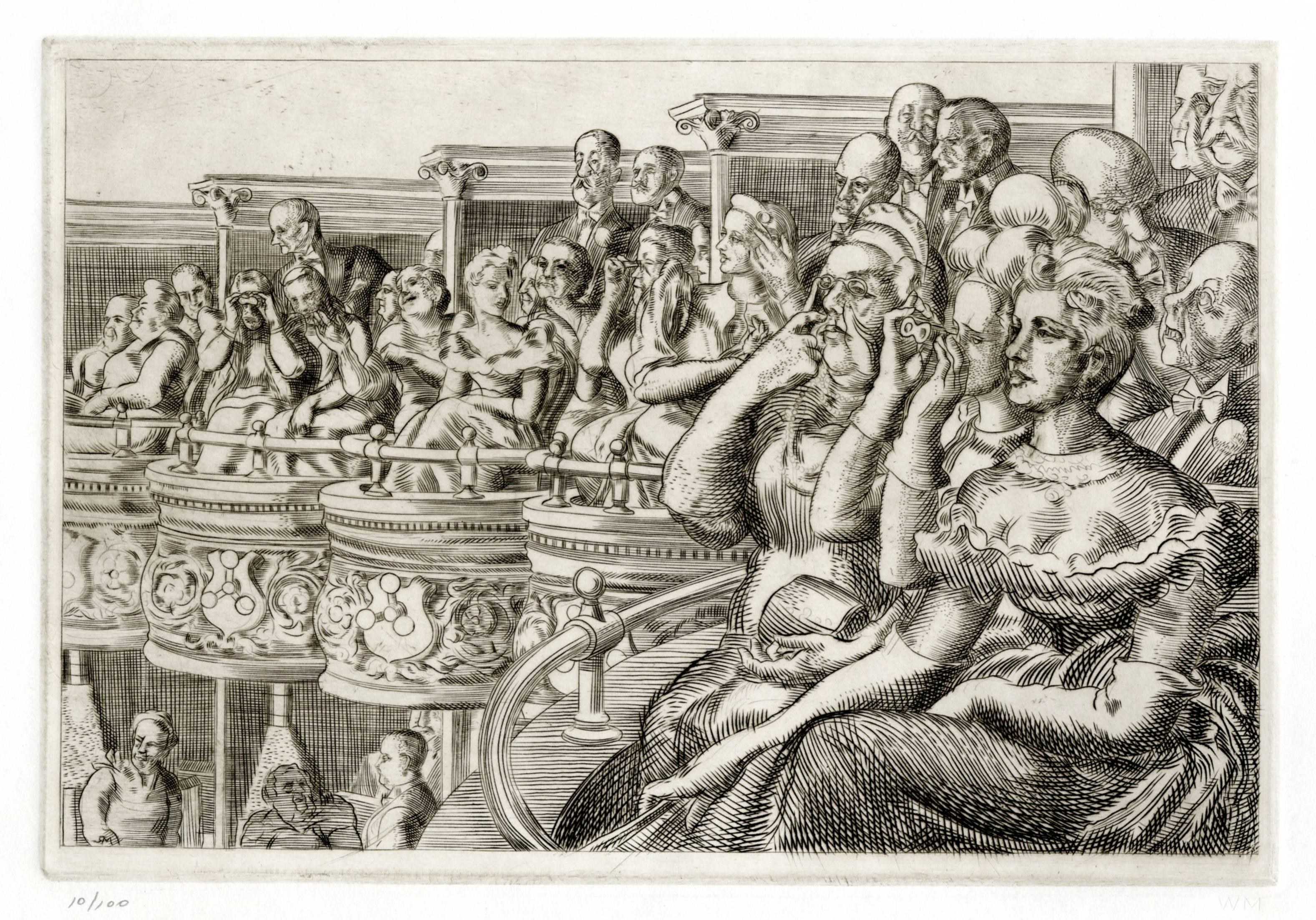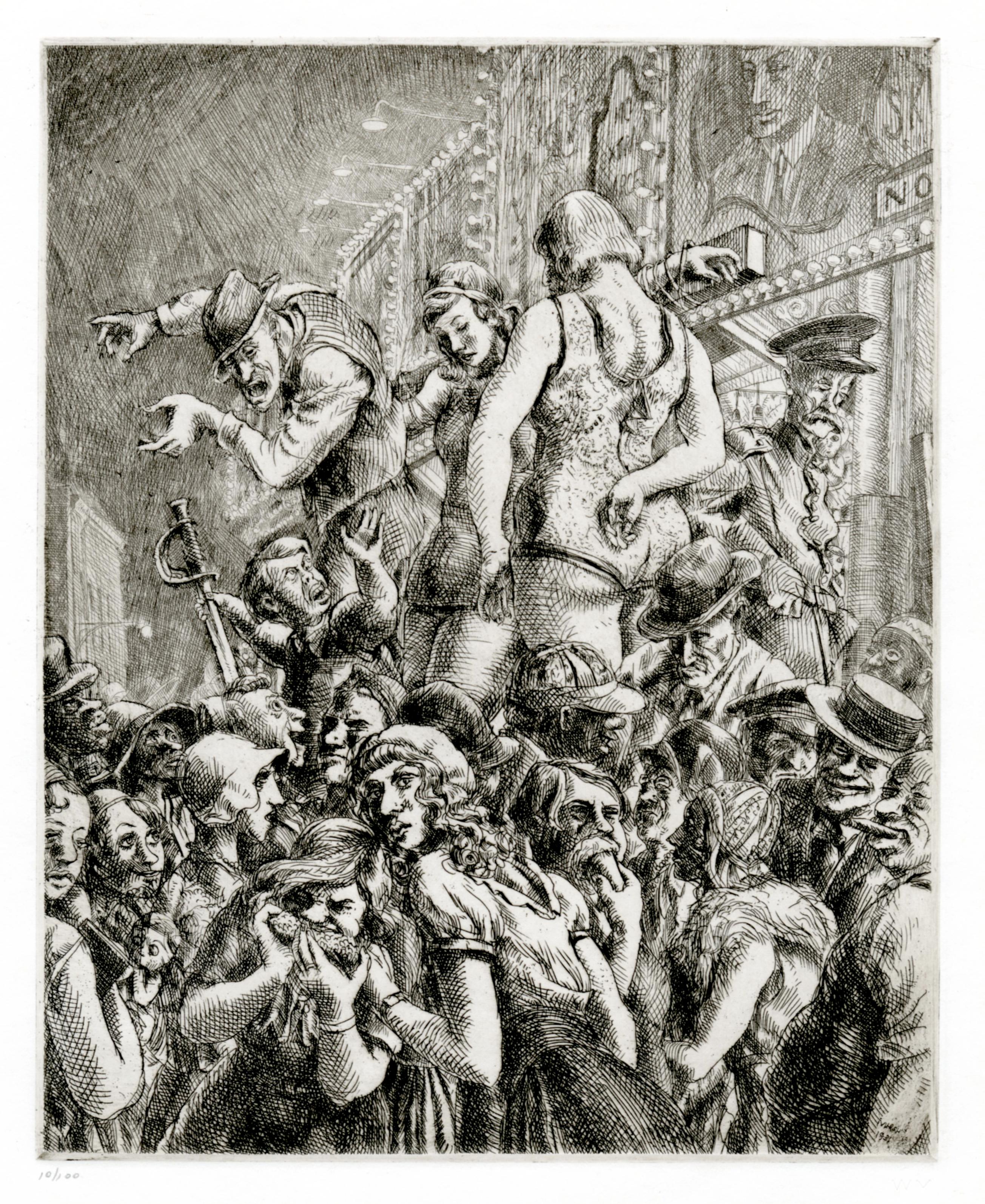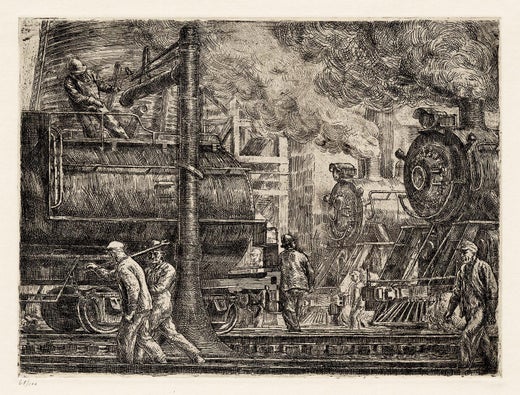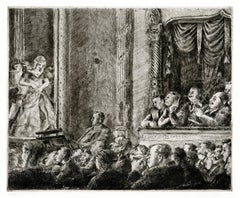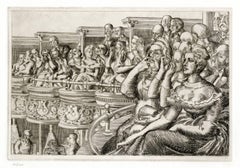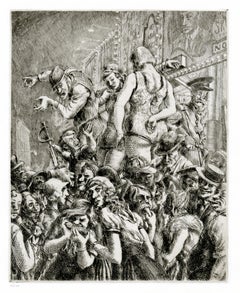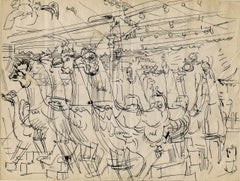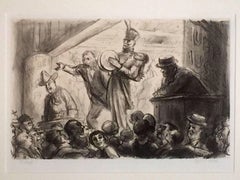Reginald MarshGaiety Burlesk1930
1930
About the Item
- Creator:Reginald Marsh (1898-1954, American)
- Creation Year:1930
- Dimensions:Height: 12 in (30.48 cm)Width: 10 in (25.4 cm)
- Medium:
- Movement & Style:
- Period:
- Condition:
- Gallery Location:Fairlawn, OH
- Reference Number:Seller: FA97001stDibs: LU14014971002
Reginald Marsh
Reginald Marsh was born in Paris, France, in 1898. His family returned to the U.S. in 1900, settling in New Jersey. The Marsh family moved to New Rochelle, New York, in 1914, where Reginald attended the Riverview Military Academy until 1915. Marsh spent his senior year at the Lawrenceville School where he drew for the school's annual. Marsh then attended Yale School of Art in 1916–20 where he became the star illustrator for The Yale Record and, later, its art editor. In his newspaper work Marsh exhibited a graphic skill and a gift for pictorial humor.
On graduating from Yale in 1920, Marsh moved to New York City where he supported himself as a freelance illustrator for newspapers and magazines, such as Vanity Fair and Harper's Bazaar. In 1922, Marsh became a staff artist for The Daily News, first drawing city life and then a column of vaudeville illustrations. When The New Yorker began in 1925, Marsh became a staff member, contributing through 1931. These illustration jobs provided Marsh with a good income and a great amount of free time, which allowed him to study painting at the Art Students League on and off through the 1920s with Kenneth Hayes Miller, John Sloan and George Luks. When Marsh began to paint in earnest in 1923, he joined the Whitney Studio Club, where he had one-man exhibitions in 1924 and 1928.
In the early 1920s Marsh made his first trip to Coney Island on a project for Vanity Fair. He was instantly drawn to the raucous environment of extremes, capturing the boardwalks, beaches and sideshows in his sketchbooks. Marsh often remained in New York for the summer to spend time at Coney Island. The rest of the year Marsh painted industrial subjects. He also enjoyed recording the physical and social life of a newly commercialized city, focusing on taxi-dance halls, burlesque, Coney Island, subways and the Bowery.
In 1929 Marsh took a studio near Union Square in New York where he remained for most of his life, roaming the streets with his sketchbook. The same sketches he worked up for his newspaper and magazine illustrations found their way into his paintings.
The 1930s and 1940s were very successful for Marsh. He exhibited in most of the annual exhibitions of contemporary American art at the Whitney Museum of American Art (1924–54), the Corcoran Gallery of Art (1932–57), the Pennsylvania Academy of the Fine Arts (1932–52), the Art Institute of Chicago (1928–49) and the National Academy of Design (1927–49). He also had many one-man exhibitions at the Frank K. Rehn Galleries in New York.
Marsh began teaching at the Art Students League in 1935 where he soon became one of the most popular teachers. In the spring of 1954, Marsh was chosen to receive the gold medal of the National Institute of Arts and Letters, an extremely high award in the American cultural world.
Find original Reginald Marsh prints, drawings and paintings on 1stDibs.
- ShippingRetrieving quote...Shipping from: Fairlawn, OH
- Return Policy
More From This Seller
View All1930s Ashcan School Figurative Prints
Etching
1930s American Modern Figurative Prints
Etching
1930s Figurative Prints
Etching
1940s American Modern Drawings and Watercolor Paintings
Ink
Early 1900s Ashcan School Nude Drawings and Watercolors
Chalk
1960s French School Figurative Prints
Lithograph
You May Also Like
1920s American Realist Figurative Prints
Etching
1920s American Impressionist Nude Prints
Lithograph
1930s American Realist Nude Prints
Etching
1920s Figurative Prints
Lithograph
1930s American Realist Figurative Prints
Engraving, Etching
1930s Realist Figurative Prints
Engraving

